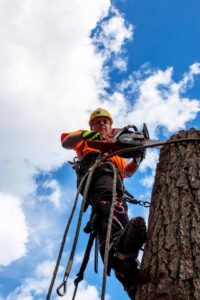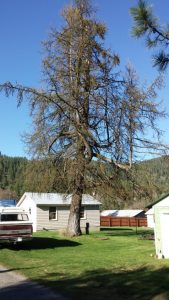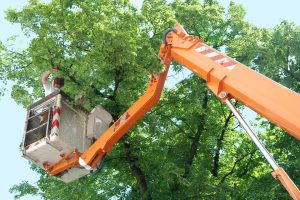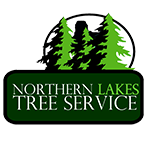Tree Topping and Crown Reduction
 Warning Home Owners Approach With Caution!
Warning Home Owners Approach With Caution!
In this article, I will go over the pros and cons of topping a healthy tree to add stability. I want to show you how it can go from bad to worse concerning the topic of tree topping and when “Tree Top Crown Reduction” can be used in its place. The reason for the above warning is to reinforce the idea that we need to approach this subject with extreme caution for the future safety of your family and the health of the tree, so let’s get started!
Over the years, I've received many calls from customers who were concerned about the trees around their homes, especially after a big windstorm.
I am sometimes asked to remove the tops of healthy trees, typically the ones that are closest to their homes. The idea is that if a tree has its top removed, it’s much safer and can stand up to high winds. To begin with, this statement is true, but after 5 to 8 years, the tree and the homeowner are worse off than they were before.

You see, after a tree is topped, the limbs that are left closest to the cut compete with each other to become a new tree top, so after a few years, you are faced with a more dangerous tree than before.
This is because of the height and weight of the new tree tops. The wind will then be able to push it around till it breaks off and possibly lands on your home! Ultimately, the tree must be topped again.
There are times that a healthy tree must be topped, but there are methods of doing this to decrease the chance of multiple tops. You can even train a tree limb to grow as a single top.
Now I want to tell you why “tree crown reduction” is my favorite method of stabilizing a tree. Using this method, you can get great results.
First, the tree still looks natural, unlike a topped tree, because we are reducing the crown and not topping it. The stabilization of the tree comes from the strategic removal of limbs in the top third of the tree. Doing this reduces wind drag and decreases weight at the top of the tree.

Low Impact Tree Removal
This method is also called “sail reduction." Here is an example. On a sailboat, the wind fills the sail to push the boat through the water. The same thing happens with trees; the bigger and fuller they are, the more surface area the wind has to push them around. Now let’s go back to our example. If we put holes in the sail of a boat, the wind is going to have a hard time pushing it anywhere, right? Now if we put holes in the crown of the tree, it’s the same thing: less surface area for the wind to push the tree around.
I have many examples of this method around the homes in our area. Most of the trees you would have a difficult time spotting because of the care with which we do the cutting and trimming.
If you need more information on this topic or have any other tree service-related questions, please feel free to contact me.
